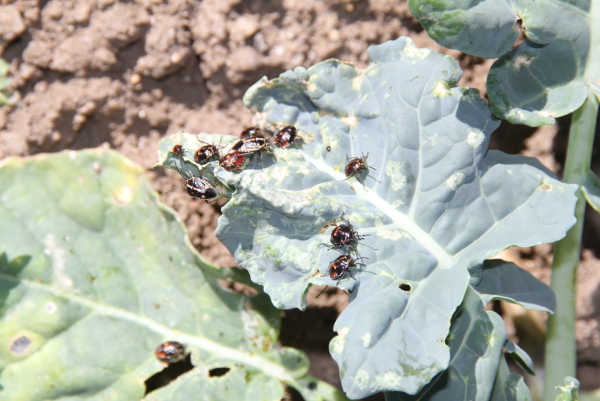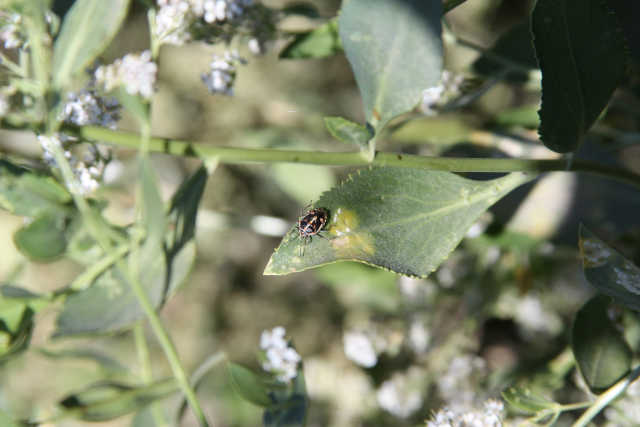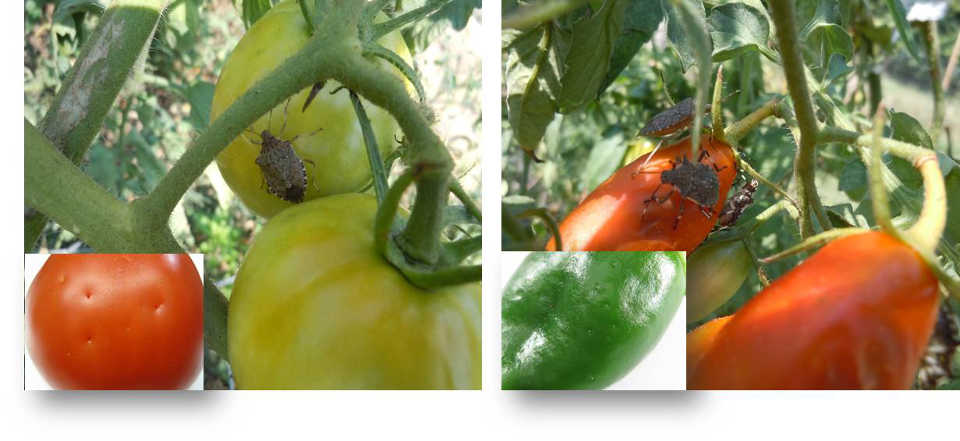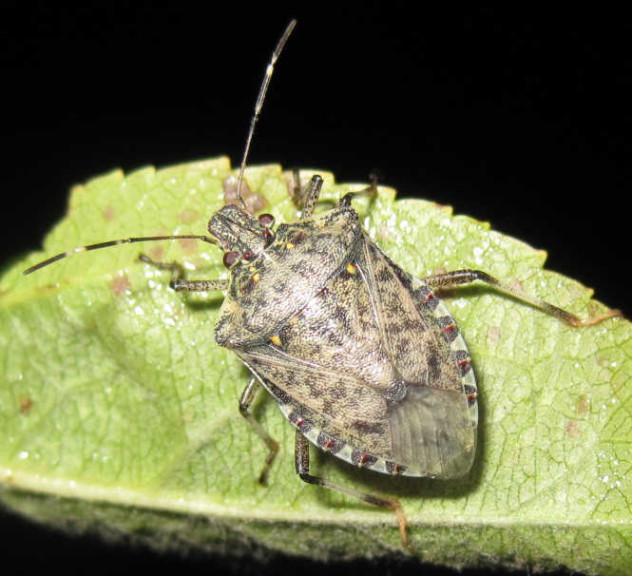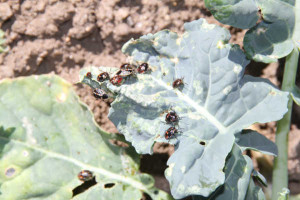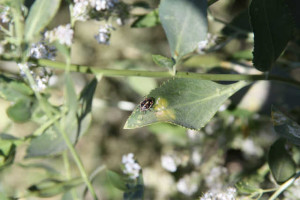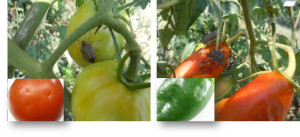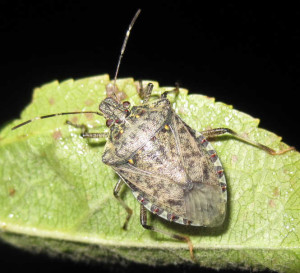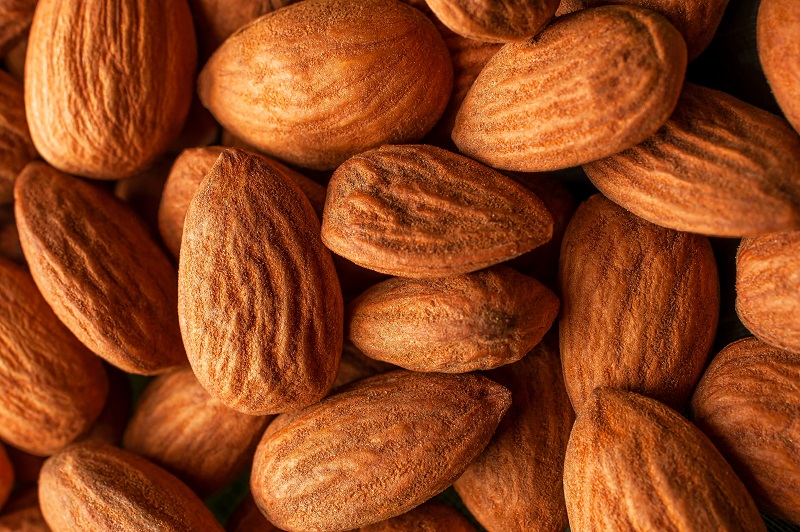Bagrada Bug And Brown Marmorated Stink Bug Posing Threat To Western Growers
[blackoutgallery id=”65234″]
Two species of stink bugs are now posing a serious threat to agricultural production in the Western U.S.: the brown marmorated stink bug (BMSB) and the bagrada bug. BMSB is established in Riverside and Sacramento Counties in California, and parts of Oregon and Washington. The bagrada bug has been noted in central and southern coastal and inland valleys of California, Arizona, Nevada, New Mexico, and Utah. Both stink bugs have one thing in common: They are non-native species in the U.S.
Identifying The Culprit
The BMSB typically lays eggs in clusters on the leaf surface with 28 or fewer eggs in a cluster. Once the eggs hatch, they undergo five nymphal stages before they grow into adults. The nymphs and adults have two distinct white bands on the antennae and a white band on the legs. These diagnostic features are absent on native stink bugs.
The bagrada bug lays eggs mostly in the soil, and rarely on leaves and stems. Similar to BMSB, the bagrada bug undergoes five nymphal stages. The bagrada bug is often misidentified as lady bird beetle or harlequin bug. The black-colored bagrada bug has white and orange marks. The harlequin bug is an orange-colored stink bug and is usually three times larger than bagrada bug.
Feeding Habits
The feeding mouthpart of stink bugs is often referred to as a piercing-sucking mouthpart, which includes a straw-like structure containing four flexible needles (stylets). These needles are used to pierce the plant or fruit surface, and function as salivary and food channels while they feed.
Once they pierce the plant or fruit surface, they spit into the fruit or plant tissue using the salivary channel, digest the nutrients, and then suck the partially digested nutrients using the food channel. Stink bugs often inject enzymes into the plant to digest the nutrients before ingestion, which can be toxic to plants.
Target Crops
Some vegetable crops at risk from BMSB are tomato, pepper, eggplant, and okra. On tomato and pepper, their feeding causes corking or thickening below the fruit surface near the feeding punctures.
In contrast, the bagrada bug prefers plants from the Brassica family more than any other plant hosts, directing its attack to the germinating seeds and seedlings of the crops. In broccoli and cauliflower, the economic injury occurs when the bug feeding kills the apical meristematic tissue of young seedling, which later result in “multiple heads” or sometimes “blind heads” (without a head).
Feeding symptoms initially appear as starburst-shaped lesions on the leaf surface. Severe feeding also depletes the nutrient reserves of the plant leading to desiccation or wilting. The brassicaceous leafy vegetables such as arugula, collards, and Indian mustard are particularly vulnerable to the bagrada bug, and feeding often results in economic damage.
An IPM Approach
Species-specific chemicals that stink bugs release to communicate either for mating or to alert other bugs of food resources, have been used as a strategy to attract stink bugs for monitoring or pest management purposes. The BMSB pheromone has been identified and developed into a lure for monitoring the pest in agricultural fields, although the threshold for management decisions has yet to be developed. During the season, BMSB is also attracted to the pheromone of the brown-winged green bug. The bagrada bug pheromone is still in the research stage.
The best time to scout for bagrada bug activity is during the warmest time of day. The bagrada bug also builds up on cruciferous weeds such as mustard species, wild radish, London rocket, short pod mustard, and shepherd’s purse, as well as the insectary crop, sweet alyssum.
Mustard weeds can be found along roadsides and edges of fields. Mustard cover crops, such as white mustard and Indian mustard in particular, could harbor large bagrada bug populations and are not often monitored for pests.
Management of BMSB can be a challenge for longer-term crops such as tomatoes and peppers, as they may be abundant during latter parts of the seasons, particularly during the fruiting period.
Spray applications of insecticides targeting bagrada bug should be executed during the early stages of the Brassica crop. For heading vegetables such as broccoli and cauliflower, seedlings should be protected from the onset of germination to the three-to-four-leaf stage. In general, pyrethroid and neonicotinoid insecticides are effective in protecting crops from both types of stink bugs.
For organic production, there are limited insecticides available to manage stink bugs. What organic growers can do, however, is use row covers to help protect plants from these two pests. Because bagrada bugs invade early stages of Brassica plants and are capable of laying eggs in the soil, row covers should be deployed immediately after planting seeds or transplants.





